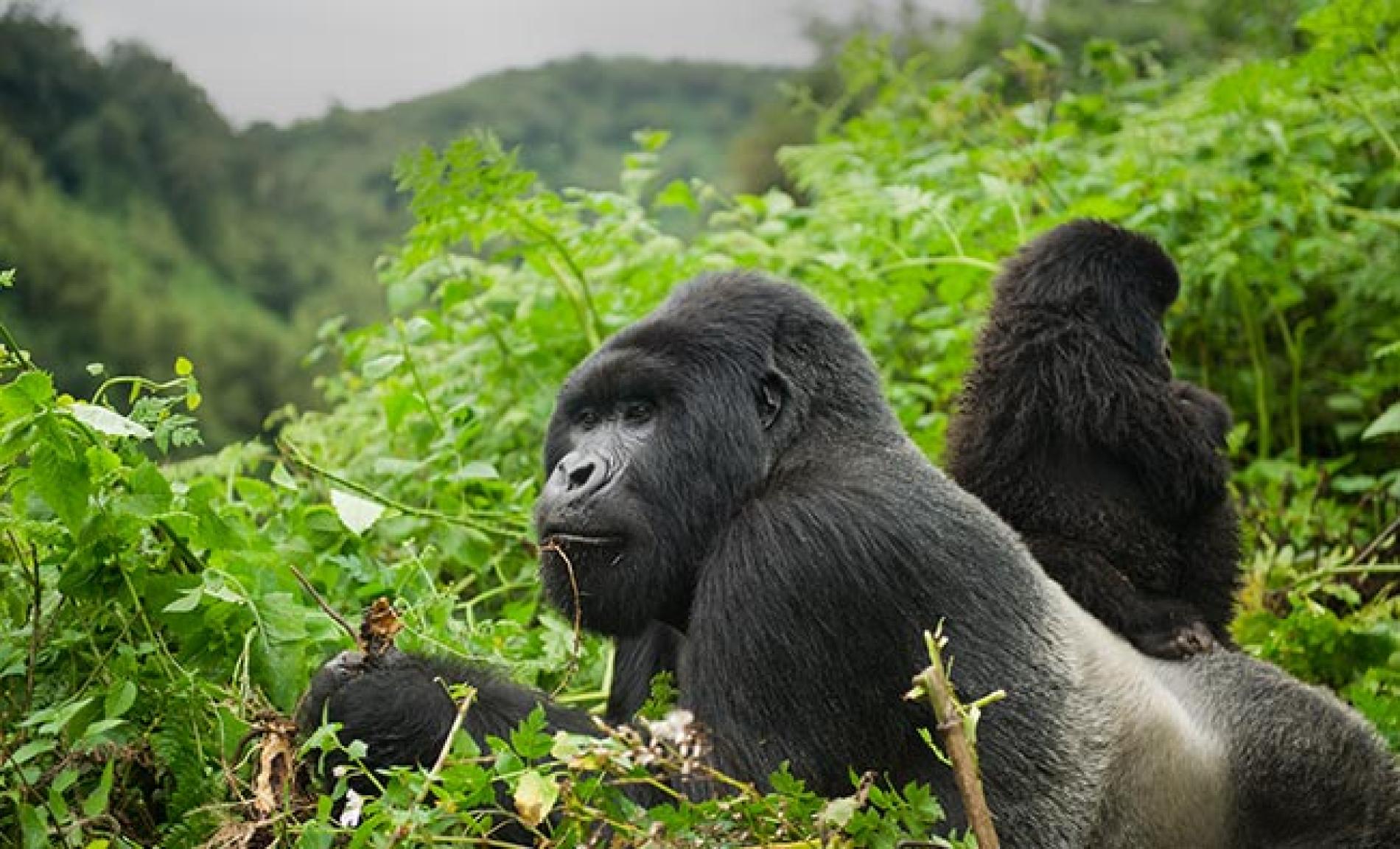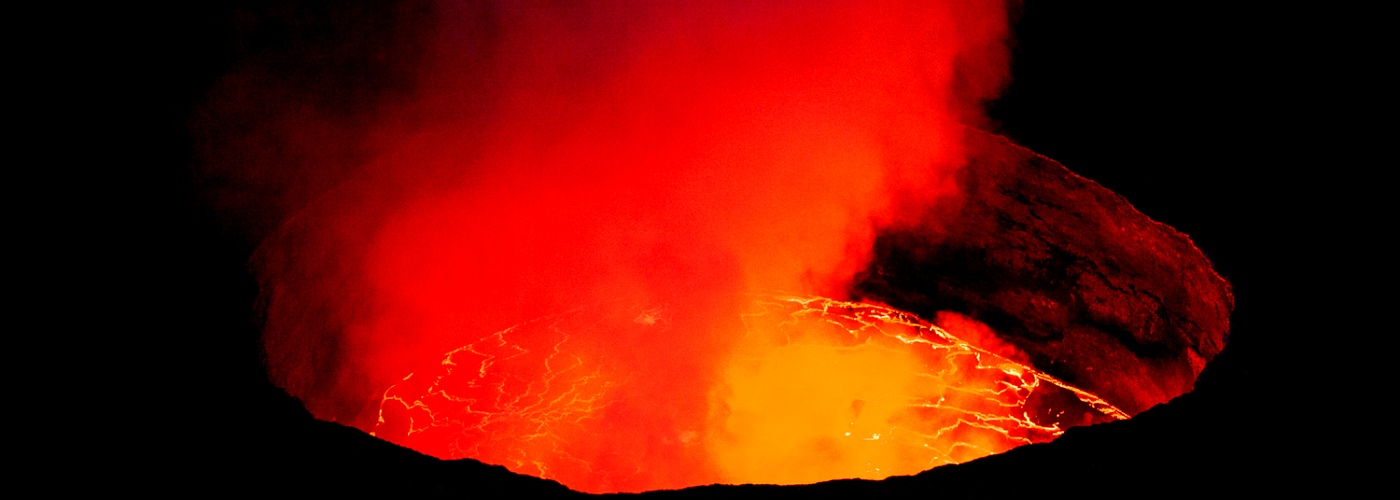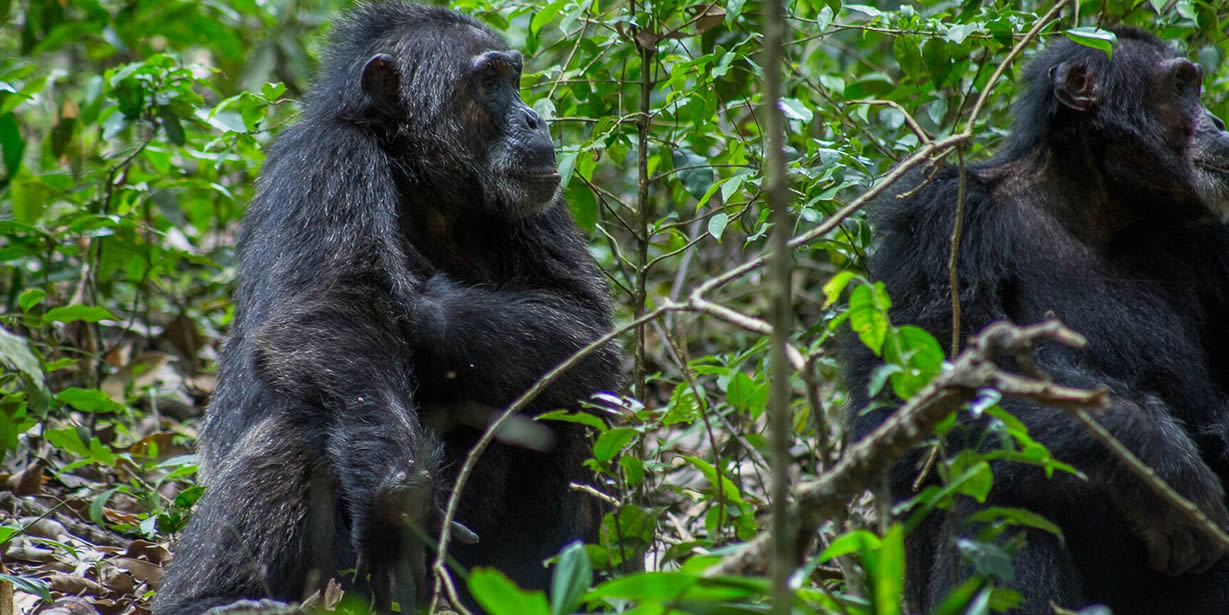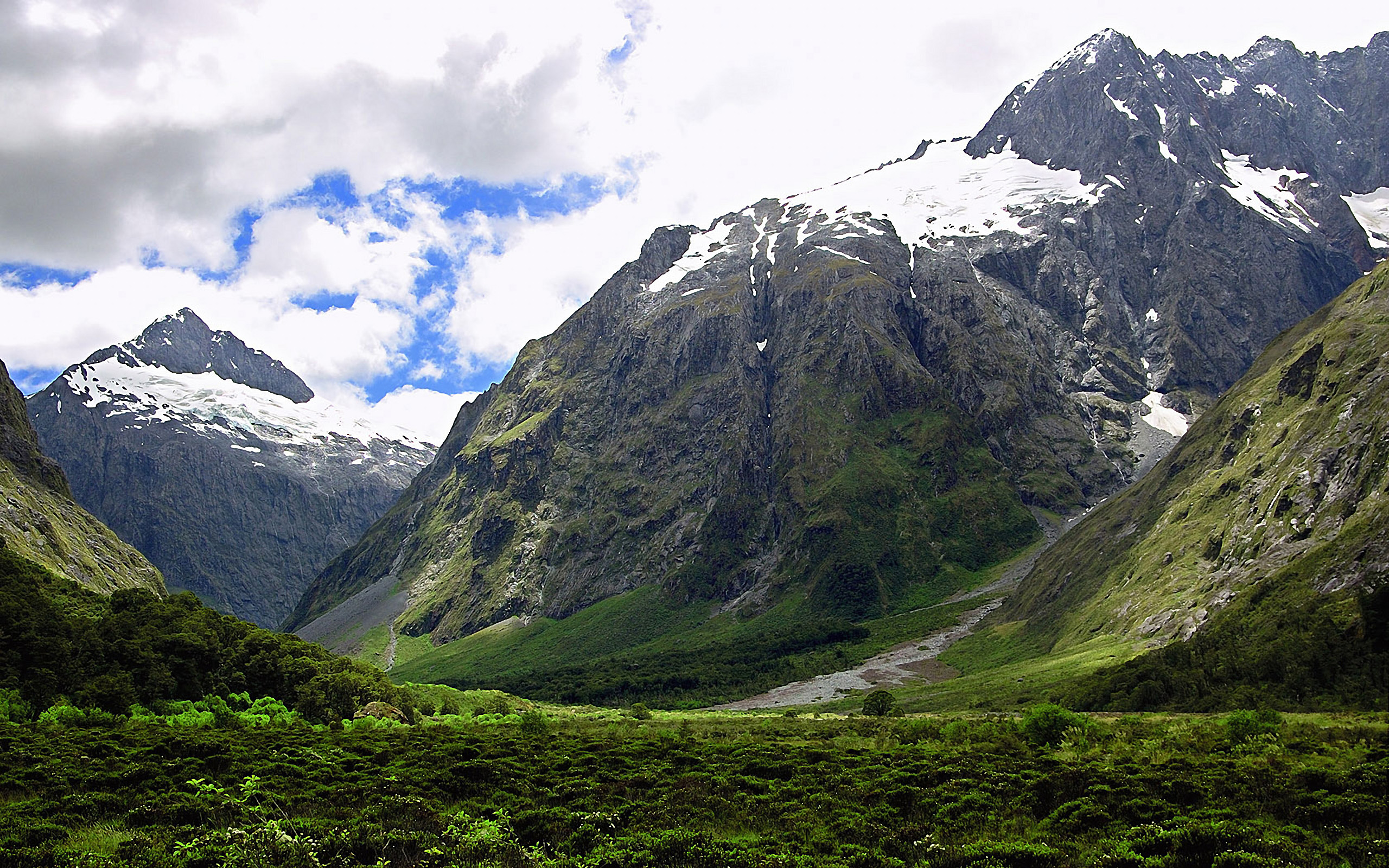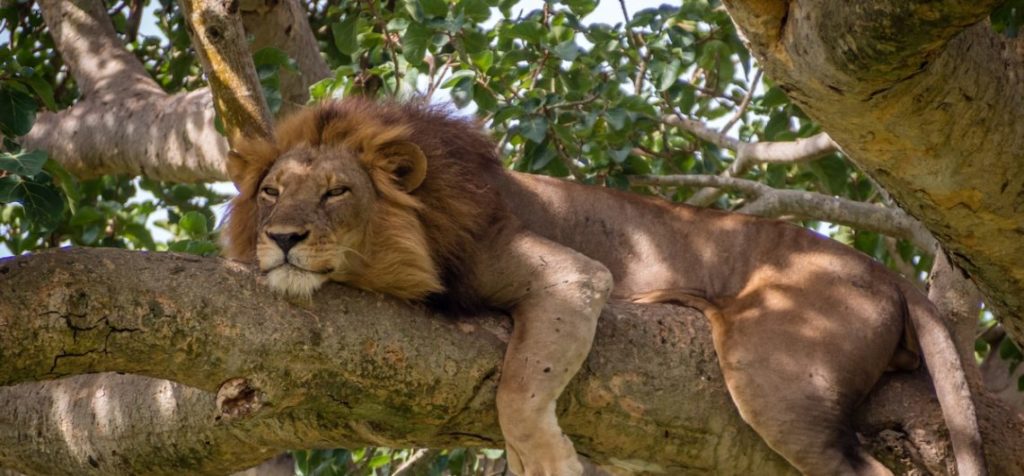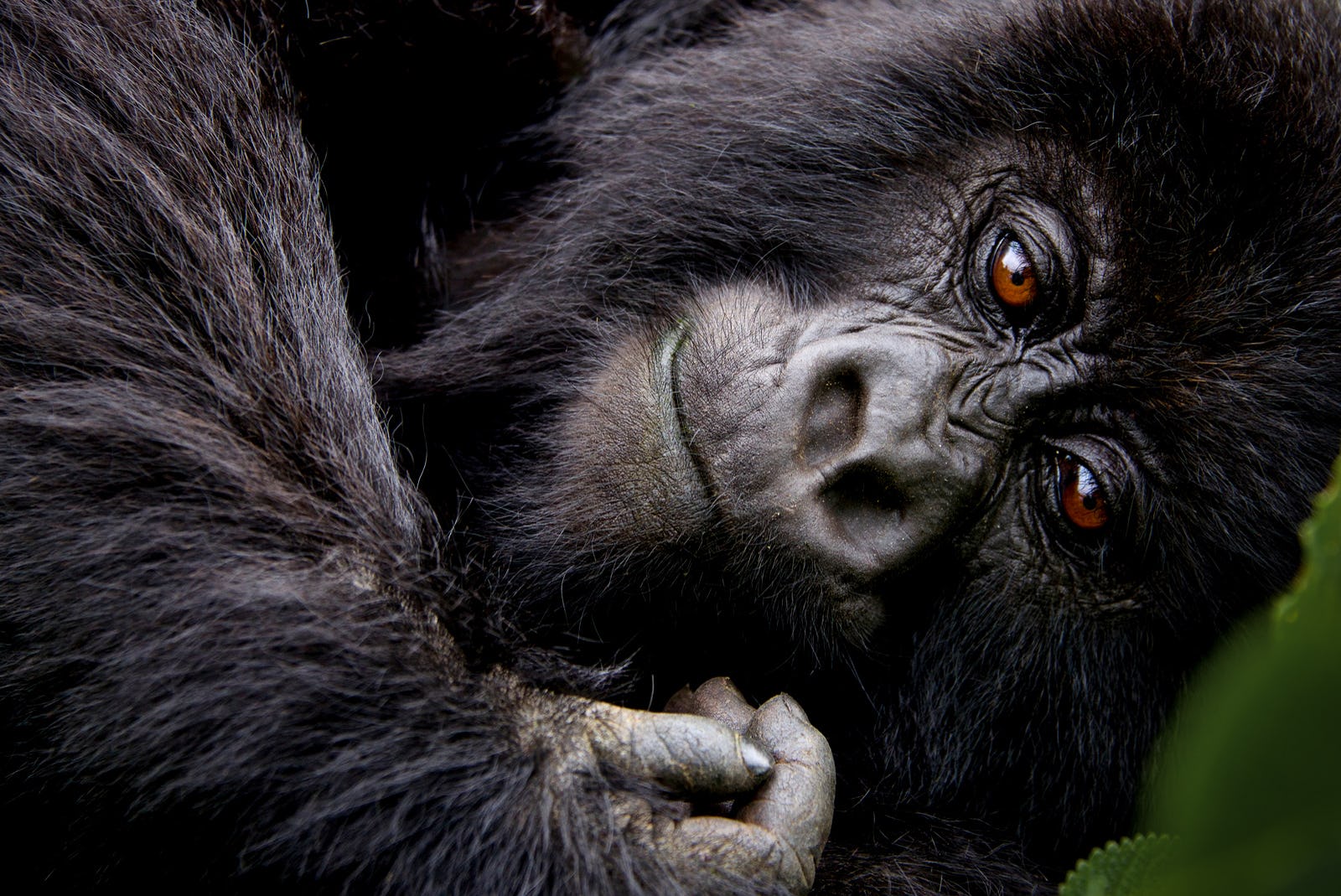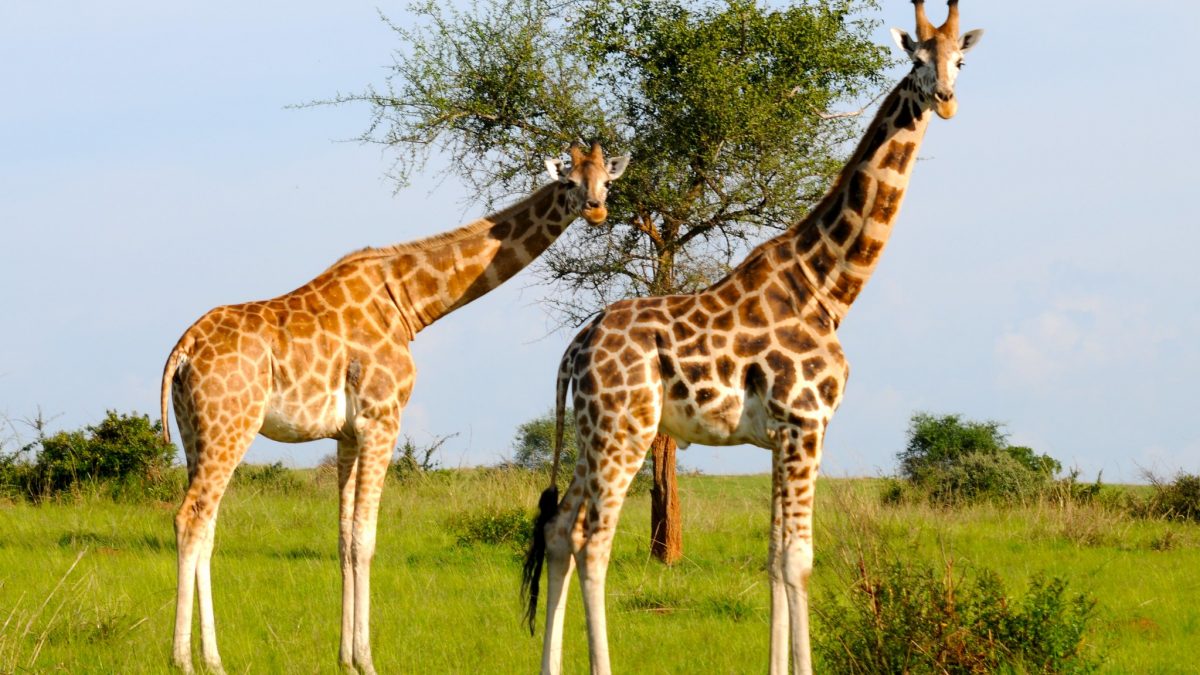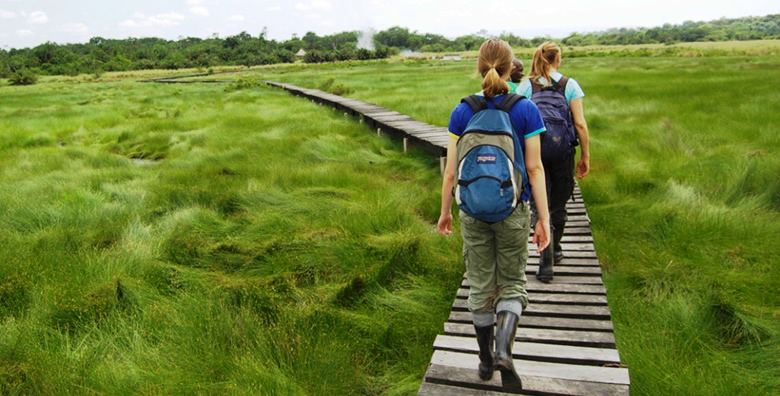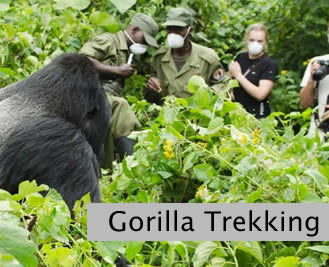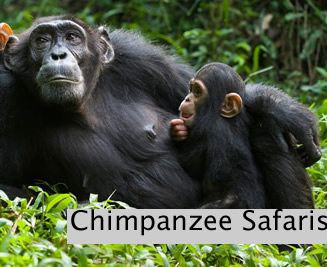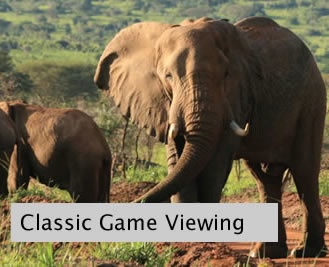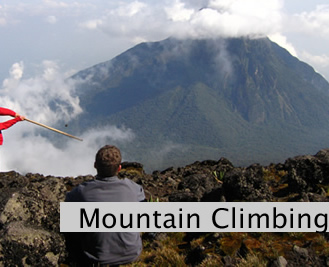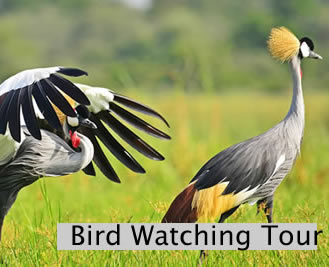Spread over 220 square kilometers, Semilki Valley National Park is one of Uganda’s 10 national parks located in Bwamba county Bundibugyo district. Semliki Park is Uganda’s newest Park that was established in 1993 to diversify tourism products in Uganda and encourage more travelers to the Pearl of Africa. Semliki Valley National park is surrounded by four ethnic groups, which are the Batwa pygmies, Bakonjo, Bwamaba, and Batuku. The park is bordered by the Democratic Republic of Congo, lake Albert and the Rwenzori Mountains. Semliki National park derived its name from River Semliki which flows in its borders. Also, the Sempaya hot springs with healing water are the key attraction in Semliki Valley National Park. The park was initially gazetted as a forest reserve in 1932 but was later transformed into a national park in 1993. Vegetation in Semliki Valley National park mainly comprise of savannahs grasslands, tropical forests, swamps add marshes. Semliki Valley national ark is an extension of Ituri Forest in the Democratic Republic of Congo. Bird watching, game viewing, nature walks, hot spring exploration are the major tourist activities in Semiliki Valley National Park. The fewer visits to Semliki Valley National park have kept the park natural offering you with an off beaten kind of experience. Explore Semliki Valley National park with African Apes Tours & Travel
What to see and do in Semliki Valley National Park
Are you planning a Uganda safari to Semliki Valley National park? No worries, the park offers you an endless list of things to see and do giving o u am memorable experience. The top activities and attractions in Semliki Valley National Park include:
Bird watching
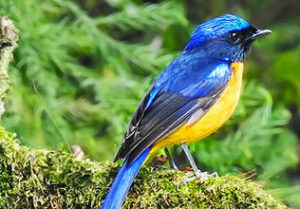 Sheltering over 250 bird species, Semliki Valley National Park is a haven for birders. Expect to see numerous forest bird species and Guinea Congo biome species some of which are not found elsewhere in the world. Bird watching in Semlki Valley National Park can be done all year round. However, March is the breeding season for birds hence the best time for bird watching in the park. the birds in Semliki Valley National park include Leaf Love, great white pelican, African, Shoebill, Green wood hoopoe, Abyssinian ground hornbill, African crake, Marsh tchagra, Black coucal, Black billed barbet, Pennant winged nightjar, Red throated bee eater, Blue breasted bee-eater, Double toothed barbet and Moustached grass warbler. Birds in Semliki Valley National Park are spotted in the swampy and forested areas of the park.
Sheltering over 250 bird species, Semliki Valley National Park is a haven for birders. Expect to see numerous forest bird species and Guinea Congo biome species some of which are not found elsewhere in the world. Bird watching in Semlki Valley National Park can be done all year round. However, March is the breeding season for birds hence the best time for bird watching in the park. the birds in Semliki Valley National park include Leaf Love, great white pelican, African, Shoebill, Green wood hoopoe, Abyssinian ground hornbill, African crake, Marsh tchagra, Black coucal, Black billed barbet, Pennant winged nightjar, Red throated bee eater, Blue breasted bee-eater, Double toothed barbet and Moustached grass warbler. Birds in Semliki Valley National Park are spotted in the swampy and forested areas of the park.
Game viewing
Semilki Valley National Park is home to over 53 mammals and hence the best place for game viewing in Uganda. Game drives through the savannahs parks of the park is the best way to see and interact with different animal species, which call this park “home”. Wild animals in Semlkki Valley national park include Mona monkey, Forest buffalos, bush babies, Hippos, Pygmy flying squirrel, African Civet, African elephants and leopards among others. Game viewing in Semliki Valley National park is best done in the morning and evening hours when wild animals are feeding before retiring for day and night rests respectively.
Sempaya Hot springs
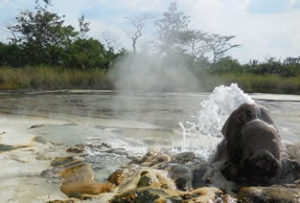 A visit to Semliki Valley National Park without touring the famous Sempaya hot springs is a miss. The hot springs are one of the major attractions and features in Semliki Valley National Park. Sempaya hot springs are divided into male Hotspring (Bitende) and Female hot spring (Nyasimbi) whose waters stream about 2 meters high giving you clear views from a distance. Come and see the 2m high geyser whose temperatures rise more than 100 degrees Celcius. The waters of Sempaya hot springs are too hot to boil eggs and plantain ready for eating. A guided boardwalk also tales you to explore another broad steaming pool where people with different kinds of sickness are seen in waters bathing for the cure.
A visit to Semliki Valley National Park without touring the famous Sempaya hot springs is a miss. The hot springs are one of the major attractions and features in Semliki Valley National Park. Sempaya hot springs are divided into male Hotspring (Bitende) and Female hot spring (Nyasimbi) whose waters stream about 2 meters high giving you clear views from a distance. Come and see the 2m high geyser whose temperatures rise more than 100 degrees Celcius. The waters of Sempaya hot springs are too hot to boil eggs and plantain ready for eating. A guided boardwalk also tales you to explore another broad steaming pool where people with different kinds of sickness are seen in waters bathing for the cure.
Nature walks and hiking
A foot walk through the forest is the best way to explore the hidden gem of Ituri Forest. Enjoy the cool, quiet environment, feel the natural forest, look out for birds, spot out different medicinal herbs. Nature walks also give you a chance to meet wild animals in the park including monkeys, chimps, and baboons among others. Enjoy the sweet melodies of birds, which sing sweetly up in the trees. Travelers are reminded to wear in the closed shoes when going for nature/forest walk.
Boat cruise
Do not miss a boat ride on Semlki River, which runs from the Rwenzori Mountains feeding into Lake Albert, and River Nile. The riverbanks shelter numerous birds and water animals, which include hippos, lizards Sitatungas, and Nile crocodiles. Feel and enjoy the cool breezes of River Semliki.
Where to sleep in Semliki Valley National Park
Travelers spending overnights in Semliki valley National park have a great choice of accommodation services. The top lodges, camps and hotels in Semliki Valley National Park include Kirimia guest house, UWA bandas, Sempaya Rest Camp, Semliki Safari Lodge, Mountains of the moon Hotel, Kyaninga Lodge, Ruwenzori View Guest House, Tooro Resort, and Rwenzori Travellers Inn among others. These accommodations offer midrange, budget and luxury food, and sleeping services to travelers at all times.
Getting to an around Semliki Valley National Park
Semliki Valley National park can be accessed using two major routes. You can use Kampala-Fortportal road via Mubende which lasts for roughly 6 hours drive. Alternatively, use Kampala-Fortportal via Masaka, Mbarara and Kasese road. This is the longest route taking over 8 hours drive but the scenic views en route are worth the drive.
A Uganda safari to Semliki Valley National park offers it all to meet, satisfy ad exceed your travel expectations. African Apes Tours offers you a guided tour to Semliki Valley national park for game viewing, hot springs and bird watching experience at affordable rates.

